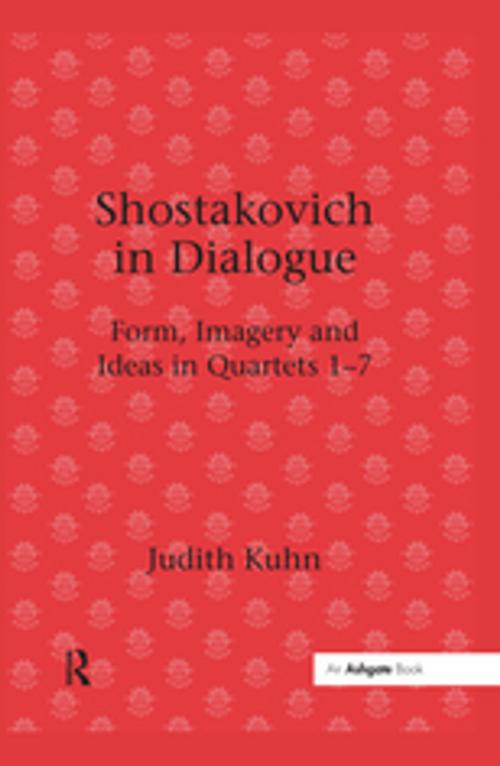| Author: | Judith Kuhn | ISBN: | 9781351548670 |
| Publisher: | Taylor and Francis | Publication: | July 5, 2017 |
| Imprint: | Routledge | Language: | English |
| Author: | Judith Kuhn |
| ISBN: | 9781351548670 |
| Publisher: | Taylor and Francis |
| Publication: | July 5, 2017 |
| Imprint: | Routledge |
| Language: | English |
A thorough examination of Shostakovich's string quartets is long overdue. Although they can justifiably lay claim to being the most significant and frequently performed twentieth-century oeuvre for that ensemble, there has been no systematic English-language study of the entire cycle. Judith Kuhn's book begins such a study, undertaken with the belief that, despite a growing awareness of the universality of Shostakovich's music, much remains to be learned from the historical context and an examination of the music's language. Much of the controversy about Shostakovich's music has been related to questions of meaning. The conflicting interpretations put forth by scholars during the musicological 'Shostakovich wars' have shown the impossibility of fixing a single meaning in the composer's music. Commentators have often heard the quartets as political in nature, although there have been contradictory views as to whether Shostakovich was a loyal communist or a dissident. The works are also often described as vivid narratives, perhaps a confessional autobiography or a chronicle of the composer's times. The cycle has also been heard to examine major philosophical issues posed by the composer's life and times, including war, death, love, the conflict of good and evil, the nature of subjectivity, the power of creativity and the place of the individual - and particularly the artist - in society. Soviet commentaries on the quartets typically describe the works through the lens of Socialist-Realist mythological master narratives. Recent Western commentaries see Shostakovich's quartets as expressions of broader twentieth-century subjectivity, filled with ruptures and uncertainty. What musical features enable these diverse interpretations? Kuhn examines each quartet in turn, looking first at its historical and biographical context, with special attention to the cultural questions being discussed at the time of its writing. She then surveys the work's reception history, and
A thorough examination of Shostakovich's string quartets is long overdue. Although they can justifiably lay claim to being the most significant and frequently performed twentieth-century oeuvre for that ensemble, there has been no systematic English-language study of the entire cycle. Judith Kuhn's book begins such a study, undertaken with the belief that, despite a growing awareness of the universality of Shostakovich's music, much remains to be learned from the historical context and an examination of the music's language. Much of the controversy about Shostakovich's music has been related to questions of meaning. The conflicting interpretations put forth by scholars during the musicological 'Shostakovich wars' have shown the impossibility of fixing a single meaning in the composer's music. Commentators have often heard the quartets as political in nature, although there have been contradictory views as to whether Shostakovich was a loyal communist or a dissident. The works are also often described as vivid narratives, perhaps a confessional autobiography or a chronicle of the composer's times. The cycle has also been heard to examine major philosophical issues posed by the composer's life and times, including war, death, love, the conflict of good and evil, the nature of subjectivity, the power of creativity and the place of the individual - and particularly the artist - in society. Soviet commentaries on the quartets typically describe the works through the lens of Socialist-Realist mythological master narratives. Recent Western commentaries see Shostakovich's quartets as expressions of broader twentieth-century subjectivity, filled with ruptures and uncertainty. What musical features enable these diverse interpretations? Kuhn examines each quartet in turn, looking first at its historical and biographical context, with special attention to the cultural questions being discussed at the time of its writing. She then surveys the work's reception history, and















